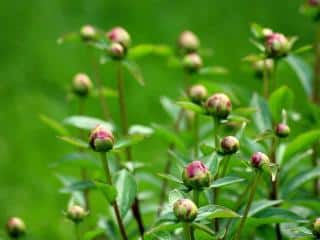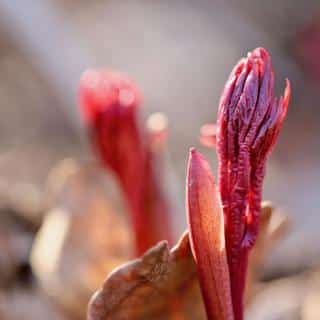

A herbaceous peony is a peony that loses stems and leaves in winter. They grow back from roots in Spring.
Queen of flowers in China, the peony was introduced to Europe in the 1800s. The Chinese emperor of the time sent a collection of the flowers to Napoleon Bonaparte’s wife Joséphine, and it became the instant must-have flower!
Today, thanks to two centuries of hybridization, a great many shapes and colors are available, especially for herbaceous peony varieties.
Read also:
Swaying at the tip of their slender stalks, Chinese peonies charm us with their round heads woven from countless petals.
This oriental beauty symbolizes Love in its native country and seduces romantic souls to this today…
And it is a favorite of florists, too, because it’s perfect for bouquets!
Initial light pastel hues grew bolder over the years and now include many colors, some even quite stark, like fuchsia or carmine red, even violet purple.
Flowers can be:
Some herbaceous peony varieties are scented, like these:
 Herbaceous peonies like neutral soil, good exposure to the sun, and protection from drafts and wind. Usually, depending on the species, they bloom from mid-spring to early summer.
Herbaceous peonies like neutral soil, good exposure to the sun, and protection from drafts and wind. Usually, depending on the species, they bloom from mid-spring to early summer.
Often purchased in nursing pots, they are preferably planted at the end of spring in a wide hole, with a handful of soil-enriching compost.
You can also add them to your vegetable patch: they like it when the soil is soft and well-tilled, and are great companion flowers for vegetables, herbs and spices.
 Water over the first summer, and then refrain from water, except in cases of drought: peonies are vulnerable to excess moisture. Add fertilizer (manure, compost or powdered bones) at the beginning of fall and in spring after the blooming phase.
Water over the first summer, and then refrain from water, except in cases of drought: peonies are vulnerable to excess moisture. Add fertilizer (manure, compost or powdered bones) at the beginning of fall and in spring after the blooming phase.
If your peonies don’t bloom during the first year, wait it out.
They may need time to start blooming, but once they have started, each following year will see more and more flowers appear…
Laure Hamann